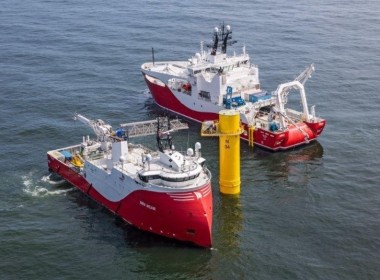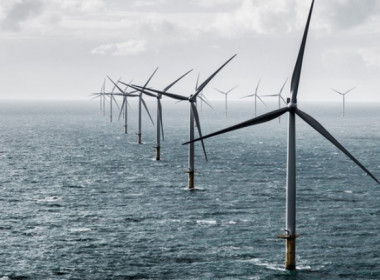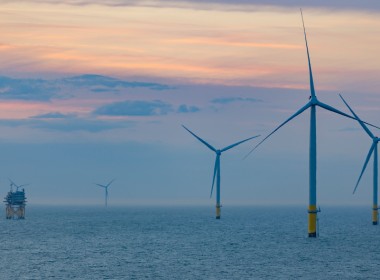COLUMN | Blowing into new frontiers – Part Three [Offshore Accounts]

“Never pass up the opportunity to have sex or appear on television,” advised American writer Gore Vidal. For Norwegians, he could also have added never to miss the chance to float your company on the stock market at an absurd valuation in a boom.
Offshore wind is generating some of the biggest and most speculative investments in shipping as the sector takes off, with orders for new build wind turbine installation vessels (WTIVs) ramping up in both Europe and Asia, as we saw here. Last week, Dominion Energy of the US announced it was buying a 2,200-tonne lift capacity Huisman crane for the Jones Act compliant WTIV it intends to build in the US, and crew with American seafarers out of Hampton Road (here). Then came Ocean Installer, which has formed an alliance with shipbuilder Vard to develop a new WTIV (Baird coverage here).
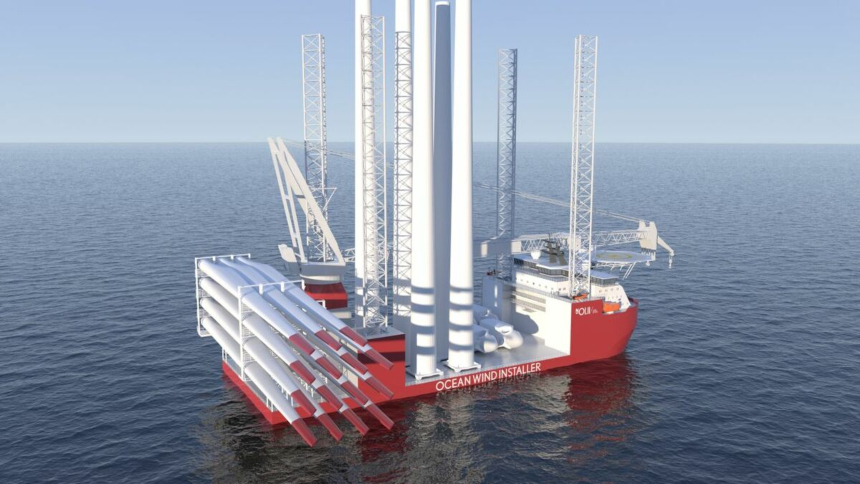
Momentum is strong
The momentum keeps building, as areas adjacent to the North Sea seek to build windfarms too. France and Portugal have demonstration floating wind projects being installed this year using WindFloat technology (here). Last week Lithuania announced it would be holding an offshore wind acreage auction in 2023 (here) to install 700 MW of capacity, enough to meet 25 per cent of the country’s energy needs. This followed up on the back of a successful Polish auction of offshore acreage in the Baltic.
Saipem announced its participation in a new windfarm off Italy in the Adriatic. In June, the Norwegian government announced the opening of two areas for offshore wind development: Utsira Nord and Sørlige Nordsjø II with a view that the license award process will start from January 2021. Let’s guess the nationality of the companies which will win the Norwegian licences.
Brazil too is moving ahead with offshore wind farm plans. Equinor has announced plans to install four GW of offshore wind energy offshore Rio and Espírito Santo. The windfarms will be installed about 20 kilometres from the coast, in water depths of from 15 metres and 35 metres. Equinor’s permit calls for a total of 320 wind turbines, each with a nominal capacity of 12 MW.
Iberdrola’s Neoenergia subsidiary has Brazilian windfarm projects with a total capacity of around nine GW to be installed in the waters of the states of Rio Grande do Sul, Rio de Janeiro and Ceará. Like Brazil’s FPSOs, these would be the biggest in the world.
Investor hunger for green
There is insatiable investor demand for shares which are perceived to be environmentally friendly and “sustainable” (see the insane rise in electric car maker Tesla’s stock price here). Wind farm operators Ørsted and Dominion trade at significant price/earnings ratio premium to the oil majors like Chevron and ExxonMobil. Spanish utility Iberdrola has launched a video campaign to introduce investors to the huge growth potential of its American projects (here). As a result of investor demand, the European oil and gas majors have increased their exposure to the sector. Green has buzz.
Total bets big
In March, Total signed an agreement to acquire an 80 per cent stake in the Erebus floating wind project offshore Wales. This small project is in 70 metres of water and will have 96MW capacity. Then, Total took majority control of the 1.1GW Seagreen windfarm project off Scotland.
On September 1st, Total and Australian finance house Macquarie’s Green Investment Group subsidiary announced a plan to form a joint venture to build five windfarms with a total capacity of two GW offshore South Korea, also using floating turbines. Construction of the first phase of 500 MW is expected to commence at the end of 2023, said a the statement from Macquarie here.
“Total has the appropriate skills to meet the technological and financial requirements that determine the success of future floating offshore developments,” Patrick Pouyanné, the company’s chairman and CEO, commented when Total unveiled its Welsh venture. Last week Total also announced it was building a pilot plant in for a joint venture to supply batteries for electric cars (here).
Pouyanne has stressed that Total is in this for the money and the business case for floating wind is strong.
“Ecology does not progress unless there are economic results. Sustainability means not only having green energy but means investing a lot in order to get cash that will allow us to reinvest.”
Shell’s wind shots
Shell is also investing. It holds a 20 per cent stake in the 77-turbine 731MW Borssele 3 and 4 windfarms off the Netherlands, and has signed up to buy half of the project’s estimated 3,000 GWh of annual output to power its Dutch refineries to create cleaner hydrocarbons with lower emissions.
This summer Shell and partner Eneco won the tender for the 759MW Hollandse Kust North zero-subsidy windfarm, its first windfarm since 2006 (when green was last hot…).
Aker Offshore Wind
So, it comes as no surprise that Norwegian companies are now also positioning themselves at the heart of the offshore windfarm revolution, which will see offshore wind generation capacity increase 600 per cent over the next decade, even as Norway itself lags with offshore wind production.
First up was the decision last month by Aker Solutions to spin off its Aker Offshore Wind unit with a separate listing in Oslo and a capital raising through a private placement. This will enable Aker to benefit from the high multiples of revenue which investors are willing to pay for “green” assets as compared to the discount at which beaten down oil and gas service companies trade upon. The pitch is basically to repurpose oil and gas assets and expertise as windfarm assets.
The investment presentation for Aker Offshore Wind is here and highlights the opportunities for “using [the] Aker group’s world-class deep-water jacket technologies to drive down costs and unlock acreage also on intermediate depths (50-70 metres) where monopiles and floaters often are less optimal,” and sell capacity at the “large Norwegian construction site at Verdal,” conveniently owned by the Aker Group, which is “available for optimisation of supply chain for North Sea basin [wind] projects.”
Sticking to their principles
The company is worth US$200 million, but currently has no actual windfarms in operation, and no projects which have reached final investment decision. Instead, Aker Offshore Wind holds a share in two offshore permits in the US and South Korea, where it has requested permission to build floating windfarms off California and Ulsan, which may be built and operational by end 2025 and end 2026, respectively.
Aker Offshore wind also holds a 20 per cent stake in Principle Power, along with US$12 billion renewable power giant EDP, Spanish oil and gas company Repsol, and Tokyo Gas.
Odfjell Drilling jumps aboard the bandwagon
Norwegian driller Odfjell is the owner and operator of five state-of-the-art, harsh environment semi-sub drilling rigs working in the North Sea. But at the end of August it announced that it would be scrapping its sixth rig, Deepsea Bergen, and making an investment in Oceanwind, a start-up company with the “long-term objective… to own and operate harsh environment floating offshore wind turbines”(here).
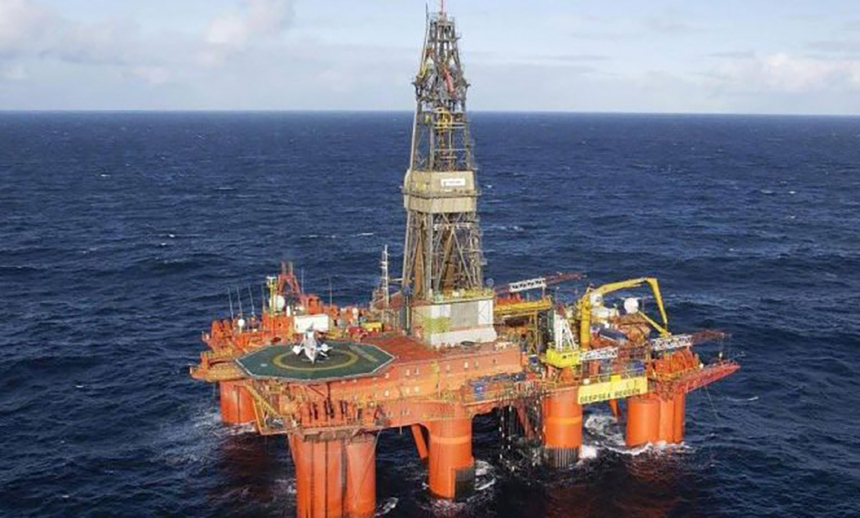
As with Aker Offshore Wind, you will note the absence of actual assets producing electricity from offshore wind at Oceanwind, but a strong aspiration to own them in future.
The pitch is the same as Aker’s – taking offshore oil and gas experience and moving into the offshore wind segment.
“With the discovery of Ekofisk in 1969, Norwegian industry players asked themselves how to take advantage of the business opportunities ahead. In 1971, Rederiet Odfjell made the final investment needed to complete the first floating drilling rig design ever created in Norway. This was the beginning of what we now recognise as Odfjell Drilling.
“I believe we are in a similar situation today. Our objective is to create value for our shareholders and society by leveraging almost five decades of competence in operating floating assets in harsh environments to develop a solid concept within offshore wind together with Oceanwind’s founders. I hope this day is the beginning of a new chapter, and another major milestone in the company’s history,” said Odfjell Drilling’s CEO Simen Lieungh.
The future is floating
Norway already has a pioneer in floating wind – its state oil company Equinor, which has developed and installed its Hywind floating wind system commercially off Scotland, and will use the floating turbines to power five of its offshore oil and gas platforms in the North Sea.
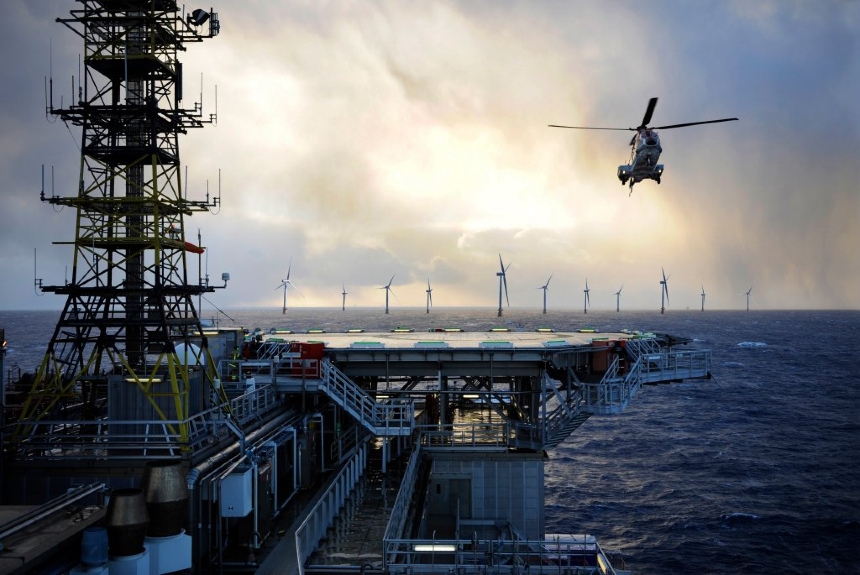
Hywind Tampen is an 88MW floating wind power project to provide electricity for the Snorre and Gullfaks offshore fields in the Norwegian sector. The background to Hywind is here.
Principle Power (here) is also marketing its WindFloat system of floating turbines. Three WindFloat 8.4MW floating turbines were deployed successfully off Portugal in June in 100 metres of water by the AHTS Bourbon Orca. Principle stresses how much cheaper and easier moored, floating turbines are to install, compared to monopile turbines, which require extensive piling for their foundations and heavy lifts by the expensive WTIVs. Floating turbines also benefit from stronger, more consistent winds further offshore than nearshore.
Equinor believes that around 80 per cent of the world’s offshore wind resource potential is in waters deeper than 60 metres.
The future needs big anchor handlers
So, whilst proponents of offshore wind have been aggressively investing in jack up WTIVs, the next step of the industry will be into deeper water with floating turbines. The excellent Bourbon video of the WindFloat turbine installation (here) and the one from the mooring provider (here) shows how the future of renewable energy far offshore may be not so different to the past – deepwater anchor handlers laying Vyrhof anchors to moor floating structures.
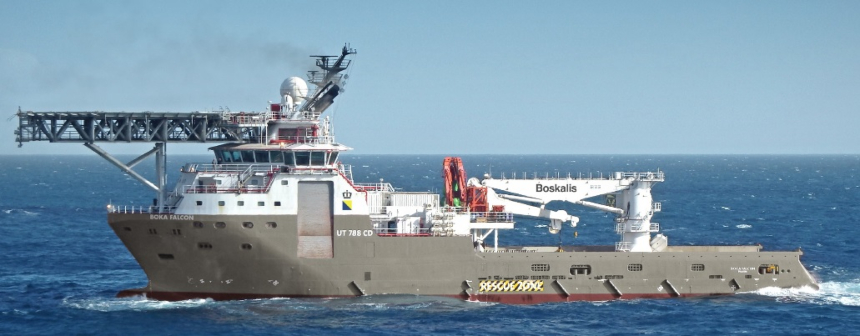
It was no surprise to see that Boskalis has won its first floating wind contract to transport and install five floating wind turbines for the Kincardine wind farm off Scotland, using a posse of anchor handlers. This month the 403-tonne bollard pull AHT BOKA Falcon will start installing the anchors and chains on the seabed. In the meantime, the floating foundations will be transported from Ferrol in Spain to Rotterdam, the company reported, using Fjord as a semi-submersible barge.
In Rotterdam, the wind turbines will be mounted on the foundations, after which the floating wind turbines are towed to the wind farm. Three other Boskalis AHTs will be deployed on the Kincardine project. Once fully built, the 50MW Kincardine will comprise six turbines, one 2MW unit which was commissioned back in October 2018, and the five new 9.525MW turbines, all supplied by MHI Vestas and installed on semi-submersible floating structures designed by Principle Power.
The future of the wind starts to look like one giant semi-sub rig move… once the froth has blown off, there will be a solid offshore business here for decades to come.
You can read the previous articles in this offshore wind series here and here.


